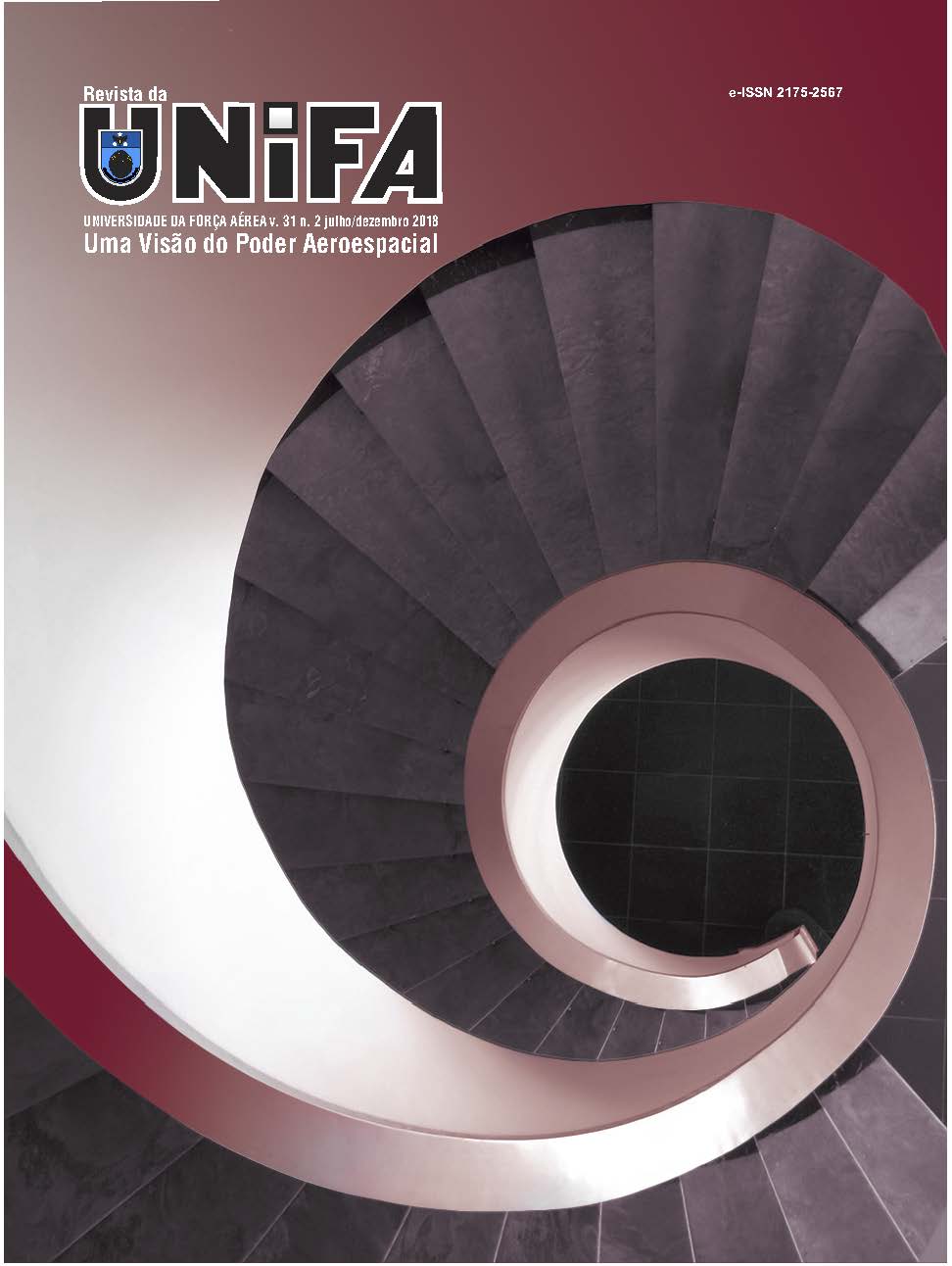Study on the influence of the Fighter Squadron Leader Training Course in the total airborne effort of the 3rd GAV Squadrons
DOI:
https://doi.org/10.22480/revunifa.2018.31.483Keywords:
Training course, Fighter squadron leader, Air Effort, Motor learningAbstract
The goal of this study was to assess the consumption of exclusive flight hours for the training of the Fighter Squadron Leader in the airborne effort of the 3rd GAV Air Squadrons, by comparing the courses conducted in the Brazilian Air Force (FAB) and in the North Atlantic Treaty Organization (NATO). This study sought to measure which airborne effort and which missions of the Fighter Squadron Leader Training Course (CFLEC) are not used in the program of operational maintenance of the Air Squadrons (EsqAe), searching in meaningful learning theories and in the stages of motor learning reasons for such exclusive missions. During the research, the legislations governing the CFLEC and those governing the Flight Lead Upgrade (FLUG) were explored in a NATO member country, used as a standard of comparison. As a survey method, a questionnaire was sent to assess the level of proficiency of the 3rd GAV pilots at the beginning of the course, used as a tool to explain why there are more missions to the CFLEC in comparison with the FLUG, as found in the research. The data analysis verified that, on average, 21% of the total airborne effort of the EsqAe in the year 2016 were dedicated exclusively to missions of the CFLEC, in other words, that they do not have similarities in the program necessary to maintain the operational qualification of the equipment. Compared to NATO, all FLUG missions can be used in the program to maintain the Combat Ready qualification, and they do not require any extra air effort for this purpose.
References
AUSUBEL, D. P.; NOVAK, J. D.; HANESIAN, H. Psicologia educativa: un punto de vista cognoscitivo. México: Trillas, 1983.
BRASIL. Comando da Aeronáutica. Primeiro Esquadrão do Terceiro Grupo de Aviação. ICA 11-59: Programa de Instrução e Manutenção Operacional do 1º/3º GAV. Boa Vista, RR, 2016a.
______. Relatório de Missão no Exterior - Equador. Boa Vista, RR, 2015. BRASIL. Comando da Aeronáutica. Segundo Esquadrão do Quinto Grupo de Aviação. Programa de Instrução e Manutenção Operacional. Natal, RN, 2016b.
BRASIL. Comando da Aeronáutica. Terceira Força Aérea. Ordem de operações do exercício operacional BVR 2 / Sabre. Brasília, DF, 2016c.
______. IOC PRO-11C: Adestramento das equipagens. Brasília, DF, 2016d.
______. IOC REL-06B: Avaliação operacional das unidades aéreas. Brasília, DF, 2016e.
FITTS, P. M.; POSNER, M. I. Human performance. Belmont: Brooks/Colemann, 1967.
GIL, A. C. Como elaborar projetos de pesquisa. 4. ed. São Paulo: Atlas, 2002.
PORTUGAL. Ministério da Defesa Nacional. Qualificação de pilotos em F-16M. MCA 503-2. 2011.
USA. Department of the Air Force. AFI 11-412. Aircrew management. Washington, DC, 2009.
Downloads
Published
Issue
Section
License
Copyright (c) 2018 Edgar Barcellos CarneiroRevista da UNIFA permite que o (s) autor (es) mantenha(m) seus direitos autorais sem restrições. Atribuição-NãoComercial 4.0 Internacional (CC BY-NC 4.0) - Revista da UNIFA é regida pela licença CC-BY-NC









